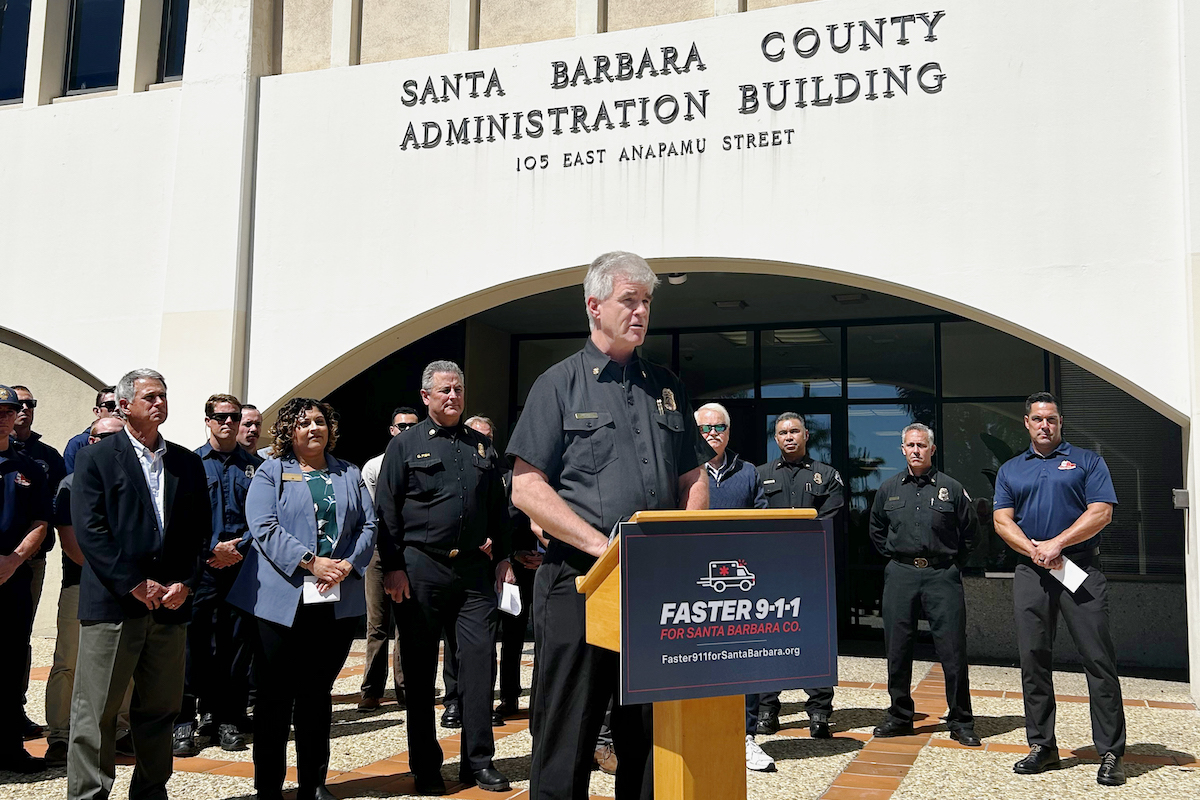Santa Barbara Supervisors Use Solomon Wisdom to Solve Ambulance War
Big Victory for County Firefighters in Getting Lead Role in New Arrangement

The county supervisors did their best collective impersonation of King Solomon late this Tuesday morning, unanimously voting to cut the proverbial baby — in this case, the county’s billion-dollar ambulance contract — in half. The supervisors awarded part of the contract to American Medical Response (AMR), the company that’s exclusively held it for the past 50 years, and the other half to the County Fire Department. How these two entities navigate this new arrangement has yet to be seen, but the county supervisors were convinced that by giving the lead to County Fire, those in need would get faster, better, and cheaper service and that any excess revenues generated would get plowed back into the system rather than into the pockets of the “institutional Wall Street hedge fund” that owns AMR’s parent company. Because county fire engines typically show up for most medical calls for service already — and often faster than AMR — some supervisors argued it made good public sense to give the fire department a cut of the action.
Tuesday’s vote marks the culmination of an intense lobbying effort waged by a confederation of every single fire department in the county and the unions that represent them. Just getting the county supervisors to put the contract out to bid was a major lift and one that was vehemently opposed by high-ranking administrators with the Department of Public Health, which has traditionally overseen the ambulance contract and was responsible for ensuring that AMR response times for high-priority calls were what the contract required.
As a result of Tuesday’s vote, that oversight function will now be transferred from Public Health to the Fire Department, a seismic shift in responsibility. Supervisor Bob Nelson, perhaps the most conservative member of the board, took issue with those who have portrayed this shift as a money grab by the Fire Department. “It’s not about the money,” Nelson insisted, so that Fire Chief Mark Hartwig can collect a bigger pension. Hartwig, Nelson stated, won’t be making any more money but will be assuming much more responsibilities.
Representatives of all the county’s fire agencies packed the supervisors’ chambers with firefighters and a large smattering of public supporters representing all sides of the political spectrum, from Wall Street–bashing union leaders to card-carrying conservatives. Santa Barbara Mayor Randy Rowse — a moderate’s moderate — expressed amazement that every fire agency in the county could work together in united purpose. “There’s no borders; there’s no turf, there’s no jurisdiction,” he exclaimed.
Next month, the county’s joint fire agencies will break ground on construction for a new regional dispatch center used by all fire agencies. A year from now, construction should be complete. Dispatchers will be able to see where every single fire engine and ambulance is relative to any call for service. The closest one to a call for service will get the call, regardless of jurisdiction.
Although AMR got effectively steamrolled, it won the bidding contest with the county fire department. “AMR won by more than 300 points for a reason,” the supervisors were reminded by AMR’s regional director Mike Sanders. The county fire department appealed those results twice and lost twice. Privately, most county supervisors expressed little confidence in results of the bidding process. Most were confident that county fire could do the job better for less cost. All were bothered that county ambulance riders were paying a lot of money to a private out-of-state corporation. Nick Clay, the Public Health Department administrator who oversees the contract, reminded the supervisors that in the past 18 years, AMR has paid $40 million to local fire agencies for providing key backup.
Clay and others in his department expressed deep concern that the new non-exclusive could inject an element of chaos into a system that by all accounts provides high-quality service. Those in need, he and others warned, could find themselves in jeopardy.
County Fire Chief Hartwig — who started his career as an EMT for a private ambulance company — put it differently: “I’d say we have two good providers but that they’re not at all integrated.” Under the new system, Hartwig argued, both providers would be much better integrated and those needing acute medical care would get a faster, better response. Leading the charge on the vote was supervisor Joan Hartmann. The vote was 5-0. The change takes place in 2024 after the current exclusive contract with AMR expires.



